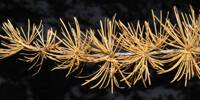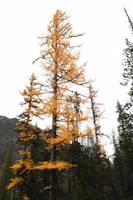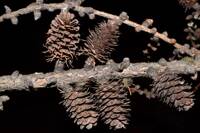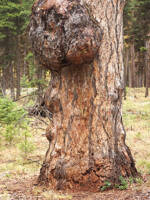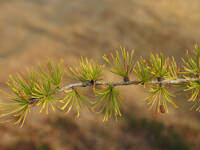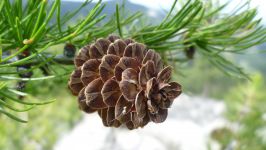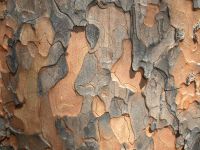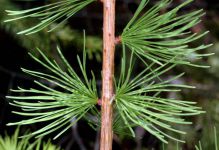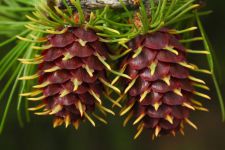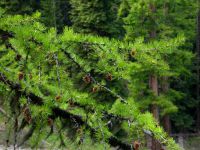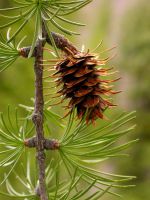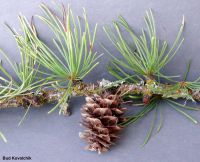Distribution: Occurring chiefly east of the Cascades crest in Washington; British Columbia to Oregon, east to Alberta and Montana.
Habitat: Mountain valleys to middle elevations in the mountains.
Cones: May-June
Origin: Native
Growth Duration: Perennial
Conservation Status: Not of concern
Pollination: Wind
A large tree up to 80 m. tall, the trunk ultimately largely bare.
Bark ultimately very thick, furrowed into large plates, flaking into cinnamon-colored scales; young twigs glabrous to pubescent.
Needles in false whorles of 15-30 per spur, pale green, stiff, 2.5-4.5 cm. long, broadly triangular in cross-section, deciduous.
Staminate cones on short, lateral, naked branches, yellow, 1 cm. long; ovulate cones 2.5-3 cm. long, the scales reddish-brown, somewhat woolly on the lower surface, much shorter than the greenish-brown to yellowish-red, long bracts; the two cones often adjacent.
Publication: N. Amer. Sylv. 3: 143, plate 120. 1849.
PNW Herbaria: Specimen records of Larix occidentalis in the Consortium of Pacific Northwest Herbaria database
WA Flora Checklist: Larix occidentalis checklist entry
OregonFlora: Larix occidentalis information
E-Flora BC: Larix occidentalis atlas page
CalPhotos: Larix occidentalis photos




